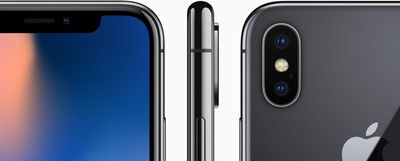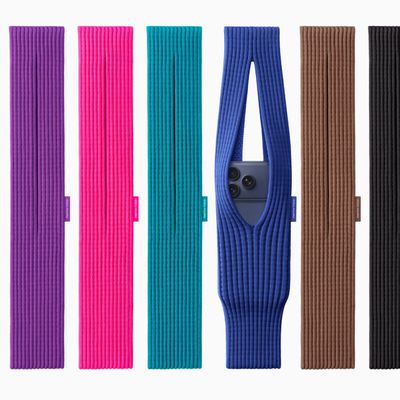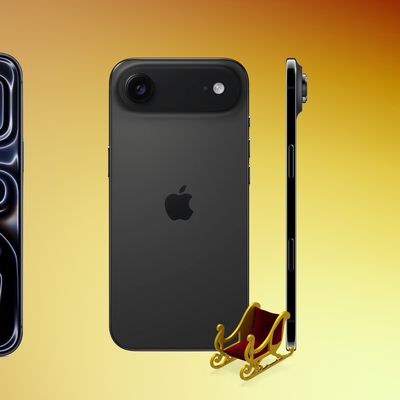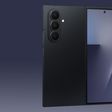Apple Reportedly Working on 3D Sensor System for Rear Camera in 2019 iPhones
Apple is developing 3D depth sensing technology for the rear-facing cameras in its 2019 iPhones, according to a new report by Bloomberg on Tuesday. The 3D sensor system will be different to the one found in the iPhone X's front-facing camera, and is said to be the next big step in turning the smartphone into a leading augmented reality device.

Apple is evaluating a different technology from the one it currently uses in the TrueDepth sensor system on the front of the iPhone X, the people said. The existing system relies on a structured-light technique that projects a pattern of 30,000 laser dots onto a user's face and measures the distortion to generate an accurate 3D image for authentication. The planned rear-facing sensor would instead use a time-of-flight approach that calculates the time it takes for a laser to bounce off surrounding objects to create a three-dimensional picture of the environment.
The existing TrueDepth camera would continue to be used in the front-facing camera of future iPhones in order to power Face ID, while the new system would bring the more advanced "time-of-flight" 3D sensing capability to the rear camera, according to the sources cited. Discussions with manufacturers are reportedly already underway, and include Infineon, Sony, STMicroelectronics, and Panasonic. Testing is said to be still in the early stages, and could end up not being used in the phones at all.
With the release of iOS 11, Apple introduced the ARKit software framework that allows iPhone developers to build augmented reality experiences into their apps. The addition of a rear-facing 3D sensor could theoretically increase the ability for virtual objects to interact with environments and enhance the illusion of solidity.
Apple was reportedly beset with production problems when making the sensor in the iPhone X's front-facing camera, because the components used in the sensor array have to be assembled with a very high degree of accuracy. According to Bloomberg, while the time-of-flight technology uses a more advanced image sensor than the existing one in the iPhone X, it does not require the same level of precision during assembly. That fact alone could make a rear-facing 3D sensor easier to produce at high volume.
Late last month, oft-reliable KGI Securities analyst Ming-Chi Kuo claimed that Apple is unlikely to expand its front-facing 3D sensing system to the rear-facing camera module on iPhones released in 2018. Kuo said the iPhone X's 3D sensing capabilities are already at least one year ahead of Android smartphones, therefore he believes Apple's focus with next year's iPhone models will be ensuring an on-time launch with adequate supply.
Popular Stories
Apple recently teamed up with Japanese fashion brand ISSEY MIYAKE to create the iPhone Pocket, a limited-edition knitted accessory designed to carry an iPhone. However, it is now completely sold out in all countries where it was released.
iPhone Pocket became available to order on Apple's online store starting Friday, November 14, in the United States, France, China, Italy, Japan, Singapore, ...
Netflix has quietly removed the ability to cast content from its mobile apps to most modern TVs and streaming devices, including newer Chromecast models and the Google TV Streamer.
The change was first spotted by users on Reddit and confirmed in an updated Netflix support page (via Android Authority), which now states that the streaming service no longer supports casting from mobile devices...
Cyber Week is here, and you can find popular Apple products like AirPods, iPad, Apple Watch, and more at all-time low prices. In this article, the majority of the discounts will be found on Amazon.
Note: MacRumors is an affiliate partner with some of these vendors. When you click a link and make a purchase, we may receive a small payment, which helps us keep the site running.
Specifically,...
Apple AI chief John Giannandrea is stepping down from his position and retiring in spring 2026, Apple announced today.
Giannandrea will serve as an advisor between now and 2026, with former Microsoft AI researcher Amar Subramanya set to take over as vice president of AI. Subramanya will report to Apple engineering chief Craig Federighi, and will lead Apple Foundation Models, ML research, and ...
The updated specs of the M5 iPad Pro may point toward a major new feature for Apple's next-generation Studio Display expected in early 2026.
Apple's latest iPad Pro debuted last month and contains one display-related change that stands out: it can now drive external monitors at up to 120Hz with Adaptive Sync. The feature should deliver lower latency, smoother motion, and fewer visual...
While all Macs are now powered by Apple's custom-designed chips, a new rumor claims that Apple may rekindle its partnership with Intel, albeit in a new and limited way.
Apple supply chain analyst Ming-Chi Kuo today said Intel is expected to begin shipping Apple's lowest-end M-series chip as early as mid-2027.
Kuo said Apple plans to utilize Intel's 18A process, which is the "earliest...
Cellular carriers have always offered big savings on the newest iPhone models during the holidays, and Black Friday 2025 sales have kicked off at AT&T, Verizon, T-Mobile, and more. Right now we're tracking notable offers on the iPhone 17, iPhone 17 Pro, iPhone 17 Pro Max, and iPhone Air. For even more savings, keep an eye on older models during the holiday shopping season.
Note: MacRumors is...
Apple is expected to launch a new foldable iPhone next year, based on multiple rumors and credible sources. The long-awaited device has been rumored for years now, but signs increasingly suggest that 2026 could indeed be the year that Apple releases its first foldable device.
Subscribe to the MacRumors YouTube channel for more videos.
Below, we've collated an updated set of key details that ...
On this week's episode of The MacRumors Show, we talk through the latest rumors about Apple's upcoming iPad mini 8.
Subscribe to The MacRumors Show YouTube channel for more videos
The next-generation version of the iPad mini is expected to feature an OLED display, as part of Apple's plan to expand the display technology across many more of its devices. Apple's first OLED device was the Apple...


























